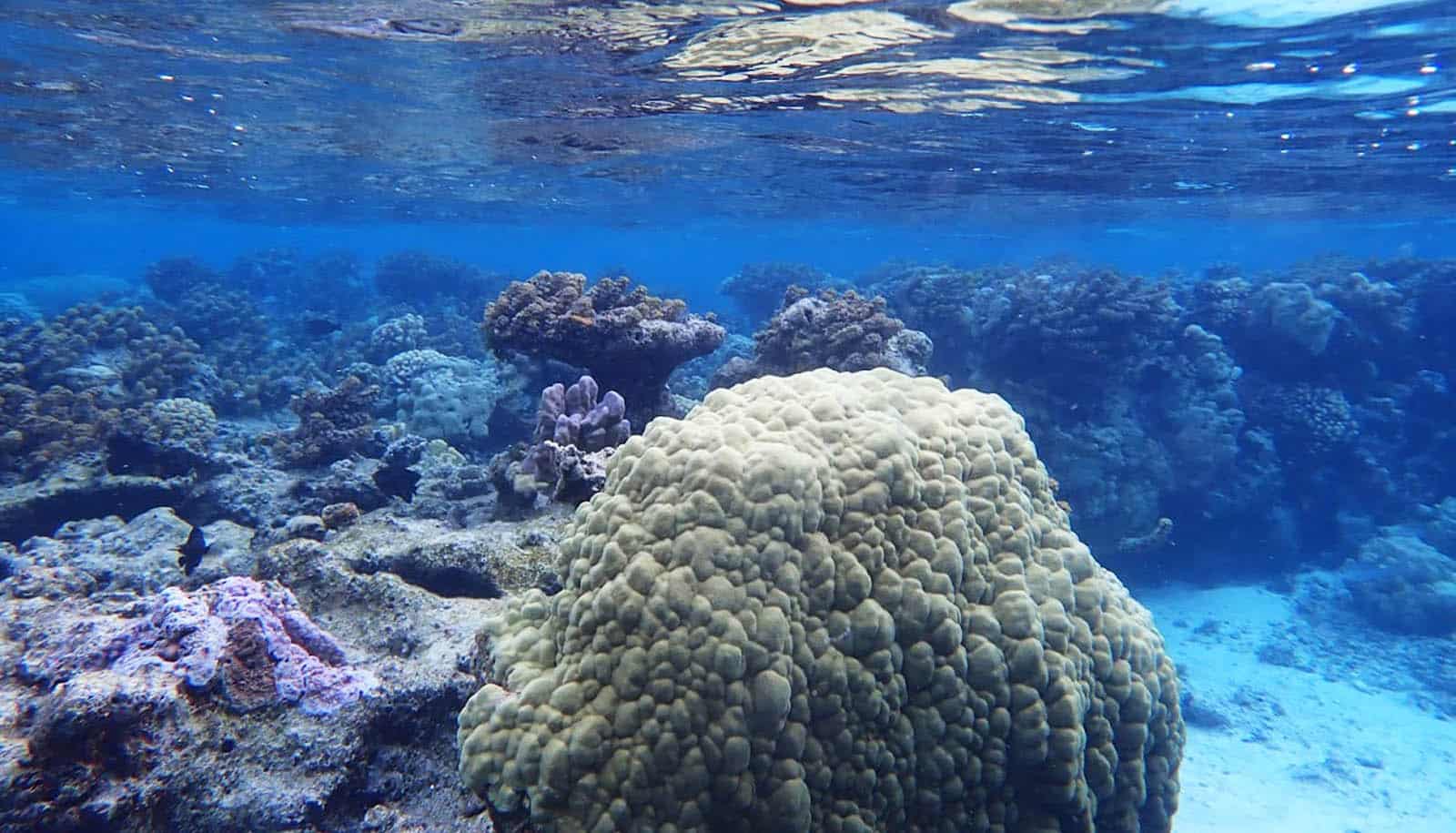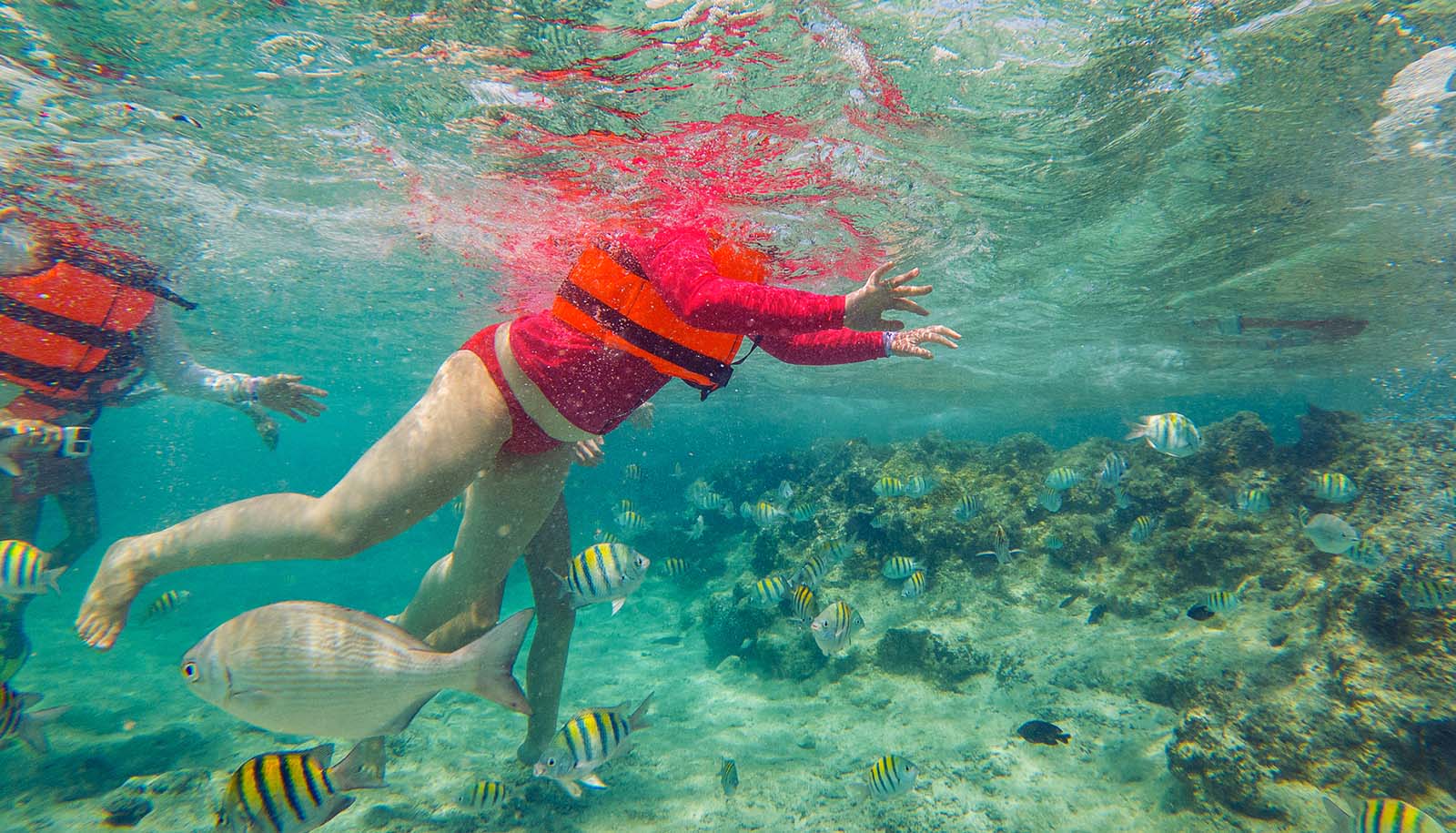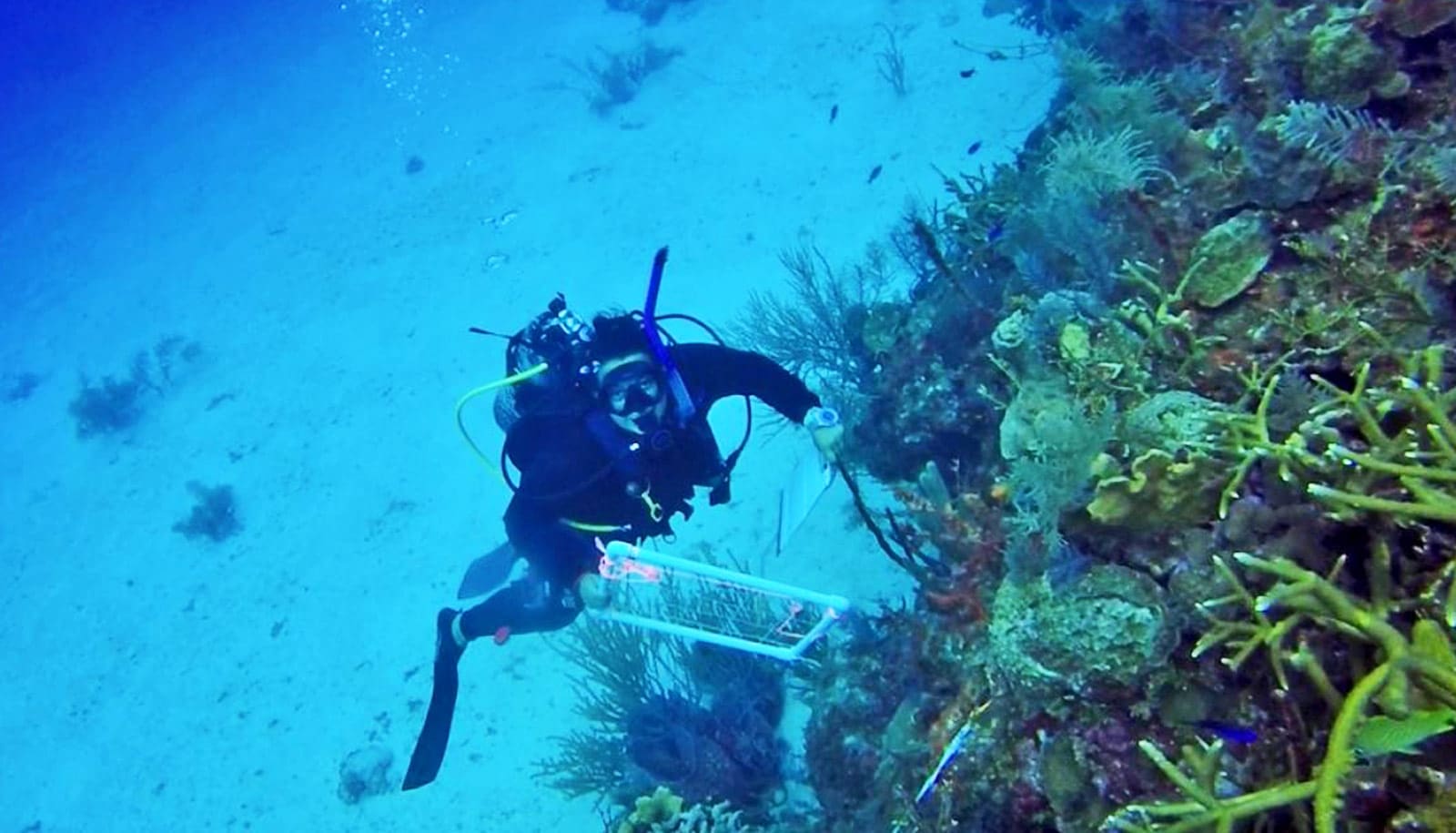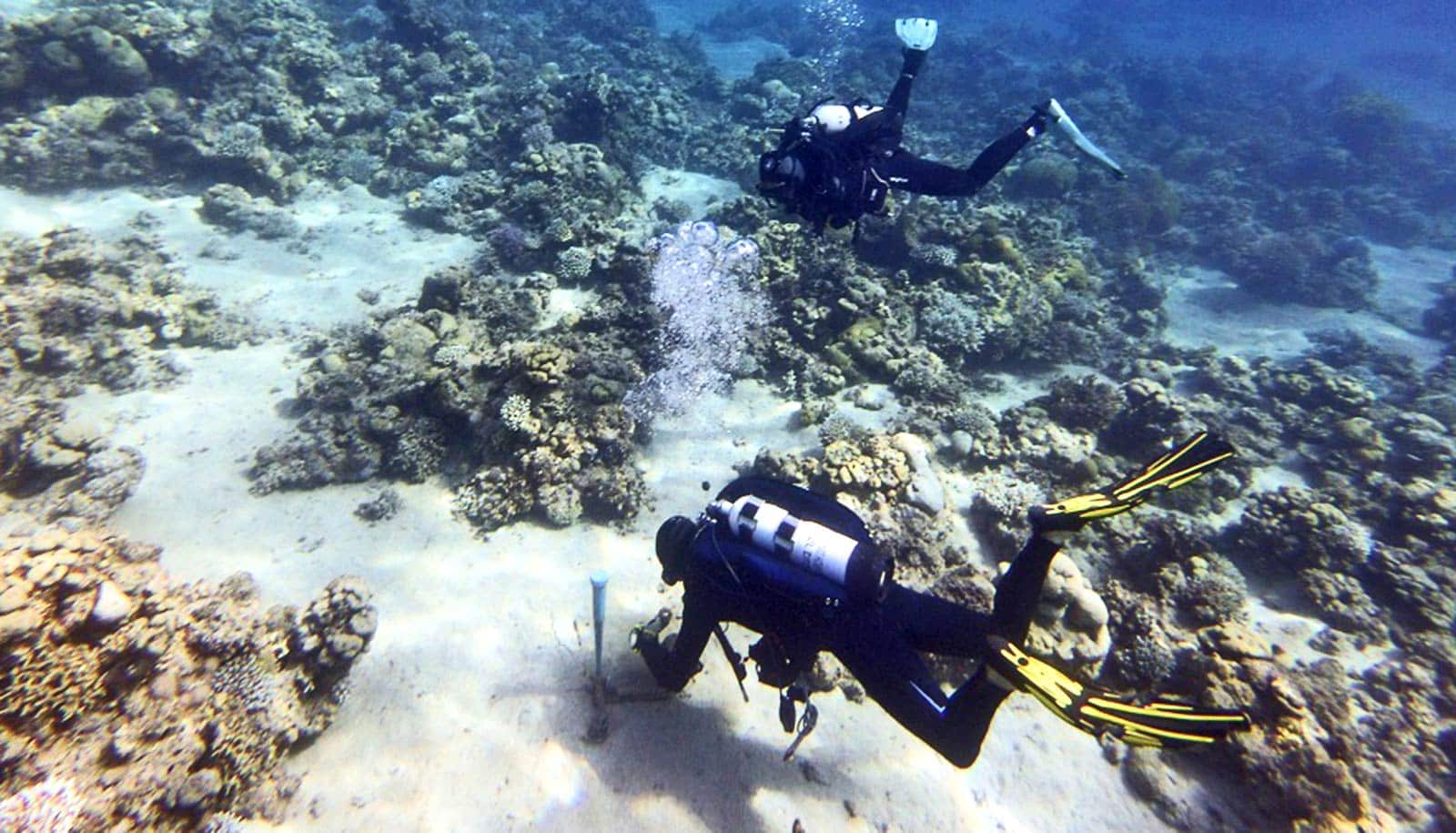During marine heat waves, viruses may increase their attacks on the symbiotic algae that give reef-building corals their amazing colors, research finds.
Few studies have examined how heat and other forms of stress affect coral virus outbreaks, and fewer still have looked at the reef-scale dynamics of those outbreaks. The study in ISME Communications does both. It’s also the first to analyze the reefwide prevalence, persistence, triggers, and health impacts of dinoflagellate-infecting RNA viruses (dinoRNAVs), single-stranded RNA viruses that infect the symbiotic algae that live inside the corals.
Lead author Lauren Howe-Kerr says coral and marine disease researchers are paying closer attention to coral viruses in the wake of studies in October 2021 and February 2022 that found evidence suggesting viral infections of symbiotic dinoflagellates might be responsible for stony coral tissue loss disease (SCTLD). One of the deadliest coral diseases ever recorded, SCTLD has been decimating reefs in Florida and the Caribbean since it was first identified in 2014.
“While this study is not focused on SCLTD, it builds our understanding of coral viruses, and particularly RNA viruses that infect coral endosymbionts,” says Howe-Kerr, a postdoctoral researcher at Rice University.
“Our work provides the first empirical evidence that exposure to high temperatures on the reef triggers dinoRNAV infections within coral colonies, and we showed those infections are intensified in unhealthy coral colonies,” Howe-Kerr says.
The study was carried out at the Moorea Coral Reef Long-term Ecological Research station on the Pacific Ocean island of Moorea in French Polynesia. Moorea, which is about 20 miles from Tahiti, is ringed by coral reefs. Samples from 54 coral colonies around the island were collected twice a year between August 2018 and October 2020. The warmest water temperatures during that span were in March 2019. Reefs across the island suffered heat-related stress during this period, including widespread bleaching.
The study sites were located in a variety of reef zones that were subject to different kinds of environmental stress. For example, ocean-facing forereefs are deeper, with cooler and more consistent water temperatures, while near-shore fringing reefs in lagoons are subjected to the highest temperatures and greatest temperature variability.
Howe-Kerr earned her doctorate from Rice in 2022 and recently finished a yearlong Ocean Policy Fellowship at the National Science Foundation. The sampling and analysis took place during her doctoral studies in the Rice lab of marine biologist and study coauthor Adrienne Correa.
“It was a huge team effort to go out and locate and sample the exact same coral colonies two times a year over this three-year period,” Correa says. “That was further complicated by the pandemic, which prevented us from sampling in March 2020, but in the end it was all worth it. We learned a great deal about reef-wide viral dynamics.”
Correa says it was clear from previous studies that corals “harbor lots of diverse viruses,” but it wasn’t known how specific viral types were distributed across a reef. A 2022 study from her group that was lead-authored by another former student, Carsten Grupstra, had detailed findings from tank-based experiments that showed viral activity of a single viral group — dinoRNAVs—in corals increased under heat stress.
“This three-year study builds off that and shows it can also happen in the ocean,” Correa says. “We saw the same kind of heat-induced increases in viral production across reefs.”
Howe-Kerr says the new study also offers one of the first glimpses of how dinoRNAVs behave in time and space over reefs and reef zones.
“We were able to characterize the diversity of dinoRNAVs and their prevalence in colonies across multiple years and reef environments,” she says. “We detected dinoRNAV infections in over 90% of the sampled colonies at some point in the three years. And the composition and diversity of viruses we found in those infections differed among reef zones. That indicates environmental conditions play a role in the dynamics of these outbreaks.”
While all 54 colonies survived the three-year experiment, 50% suffered partial mortality. The hardest hit were ocean-facing forereefs, which were almost three times more likely to experience partial mortality than were corals in the fringing reefs, which may be more used to dealing with the high temperatures of the shallower waters close to shore, Correa says.
She says a wider variety of RNA viruses were found in heat-stressed colonies in 2019, which suggests viral production had increased. And the pattern proved strongest in colonies that suffered partial mortality, which points to specific host-virus interactions that could drive ecosystem impacts, she says.
“Viral productivity will likely increase as ocean temperatures continue to rise,” Correa says. “It’s important to learn as much as we can about host-virus interactions, because they have the potential to alter the foundational symbiosis that underpins coral reef ecosystems.”
Coauthors are from Rice, Northeastern University; the University of Oregon; the University of the Virgin Islands; Rutgers University; Oregon State University; George Mason University; New Zealand’s National Institute of Water and Atmospheric Research; and the Mote Marine Laboratory’s Coral Reef Research and Restoration Center in Summerland Key, Florida.
Funding came from the National Science Foundation, an Early-Career Research Fellowship from the Gulf Research Program of the National Academies of Sciences, the Gordon and Betty Moore Foundation, Rice University, the Texas Branch of the American Society for Microbiology’s Eugene and Millicent Goldschmidt Graduate Student Award fund, the American Philosophical Society’s Lewis and Clark Fund for Exploration and Field Research, and Rice University’s Wagoner Foreign Study Scholarship Program.
Source: Rice University



